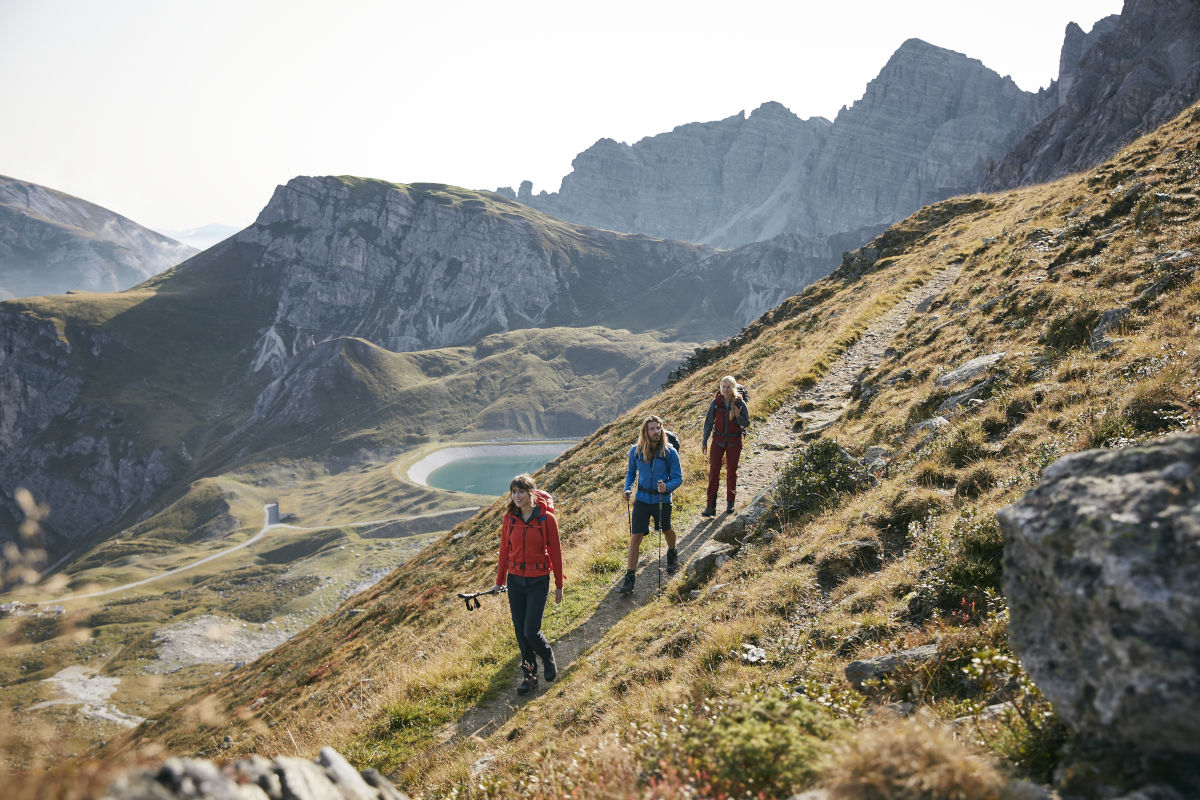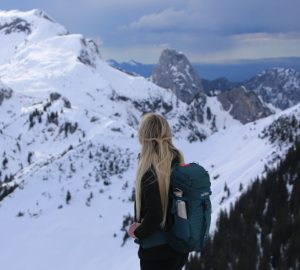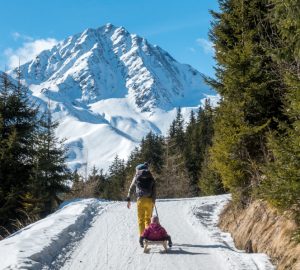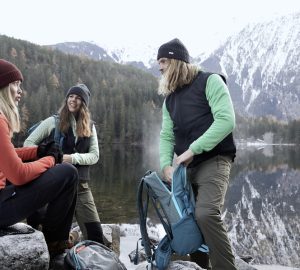Hiking in a group has many advantages: It’s fun, you can meet interesting people, you gain new experiences, and it’s safer in an emergency. However, conflicts can also arise in a group. We explain how to find the right group and what is important to make the hike a success.
Finding the right group for hiking
Finding the right hiking group is probably the first challenge. If you’ve already arranged to go hiking with a group of friends, you can safely skip this point. But what do you do if you feel like hiking and there is no one to accompany you?
A good way to find a suitable hiking group are guided hikes, such as those offered by the German Alpine Club. To do this, you can simply search for the local group in your area and browse through the range of planned hikes. In many regions, you can also find guided hikes to join through the local tourist information office.
The advantage of such offers is that you can rely on the experience of a trained mountain guide. Not only do they know the most beautiful routes, but they also know a lot about the local nature and its peculiarities. In addition, the inhibition threshold to sign up for organized hikes is not so high. Because here it is completely normal that old familiar faces are always joined by new hiking enthusiasts.
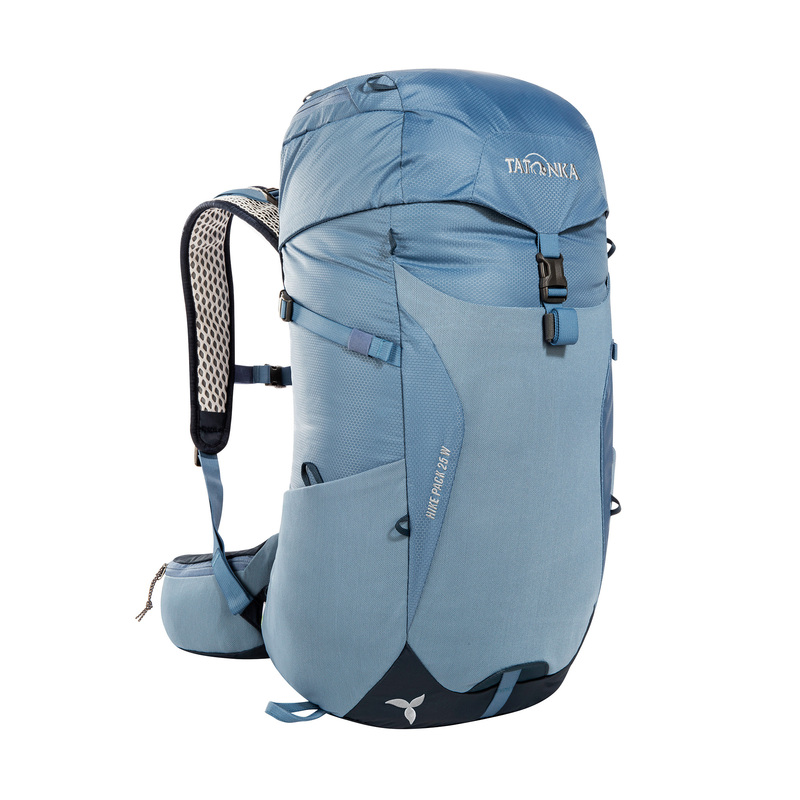
At Tatonka you are sure to find the right backpack for your next tour. Whether small and light, for a day trip with via ferrata or with adjustable carrying system and high volume for trekking tours.
Hiking clubs can also be a way to find fellow hikers for your next hike. The best way to find them is to use a search engine.
It’s worth looking around a bit and trying different things. Don’t be discouraged if your first group hike wasn’t exactly to your liking, and you didn’t necessarily make friends for life. Local groups, clubs and tour operators vary widely and it may well take a while to find the right group for you.
Also interesting: Alone for hiking in the mountains? – What you should keep in mind when hiking alone
Planning a hike for a group – Tour planning
If you are planning a hike for a group, it is important to know your companions well – especially their ability and condition. A group is just as strong as its weakest member. When planning the route, it is therefore important that no one is overtaxed by the hike and reaches his or her limits.
Especially if the members of your group have different levels of fitness, pressure and dissatisfaction can otherwise quickly arise. After all, it is not a pleasant experience for anyone in the group if the stronger ones have to constantly wait for the weaker ones. If someone feels forced by the group dynamics to exceed their own physical limits, it can even become dangerous.
So make sure to choose an easy route, especially on your first hike together. This will allow everyone to get to know each other and develop a sense of the common level as a group. Once everything has worked out well and the group is well attuned, the difficulty can increase from time to time.
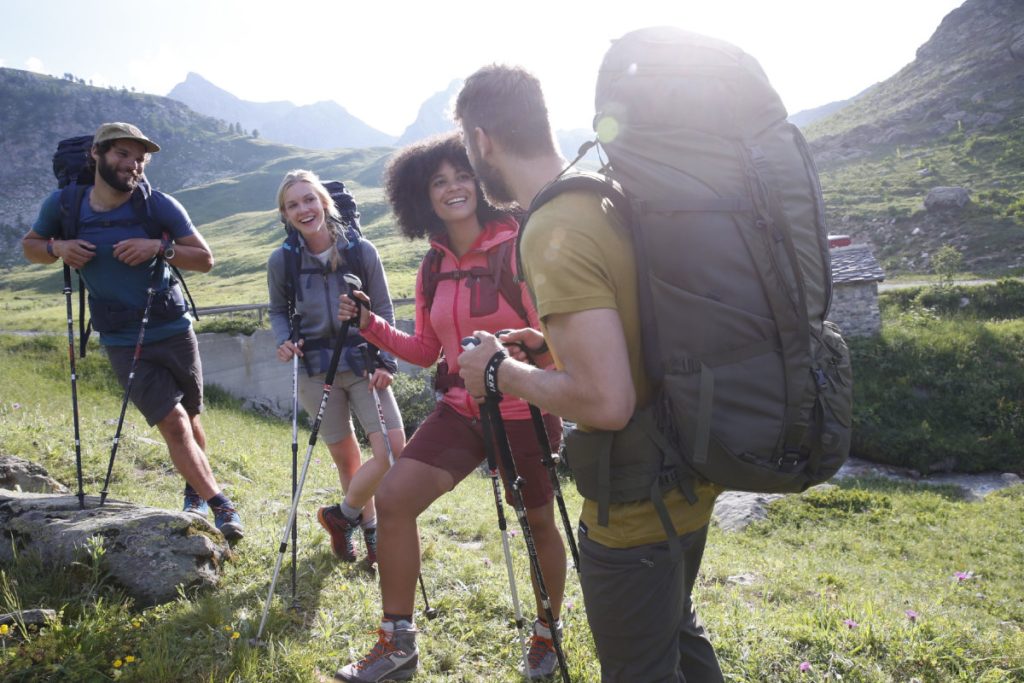
Communication and consideration are the most important
Already mentioned is the aspect of group dynamics. It is crucial for hiking in a group that needs and problems are addressed openly. Consideration and the withdrawal of the own ego are thereby basic conditions. After all, you are not in a hiking group to prove anything to the others or to put yourself in the center of attention.
Especially the “calmer” ones in the group sometimes need a little more time until they feel safe. But even for them it is important to address needs openly.
So if you ever need to leave, it’s best to let them know briefly and don’t just disappear. Regular waiting – at the latest at junctions – should also be a matter of course. You should also agree on regular breaks in the group in advance. That way, no one falls behind from the start.
If you have any physical limitations (diabetes, heart problems, allergies, etc.), you should inform the others, or at least the guide, in advance. This way, the group can adjust and react quickly and correctly in case of emergency.
Reading tip: Safety on the Mountain – Getting emergency help in the mountains
Finding the right speed
Especially at the beginning of a joint hike, the speed must first settle down. Especially if a fit member of the group is leading, he or she should stop regularly and wait until the group is together again. Open communication is also advisable for finding the right speed.
Help each other
If someone in the group is visibly having fitness problems, it can help to have someone else take off his or her backpack and carry it, at least temporarily. Almost everyone tends to decline such an offer at first. Don’t show false shame here – it benefits the group.
From the other perspective, if it is obvious that support is needed, you can also offer your help a little more insistently at times.
The same applies to drinks and food: especially on long hikes, it can be a fine move to share if you see that one of your companions has miscalculated and doesn’t have enough.
Conclusion
Hiking in a group – or so you might think after reading this post – presents some challenges. But if everyone is considerate and looks out for each other, it can be a very enjoyable experience. After all, the conditions are not the worst: You share a very nice common hobby with the enthusiasm for hiking in nature.




